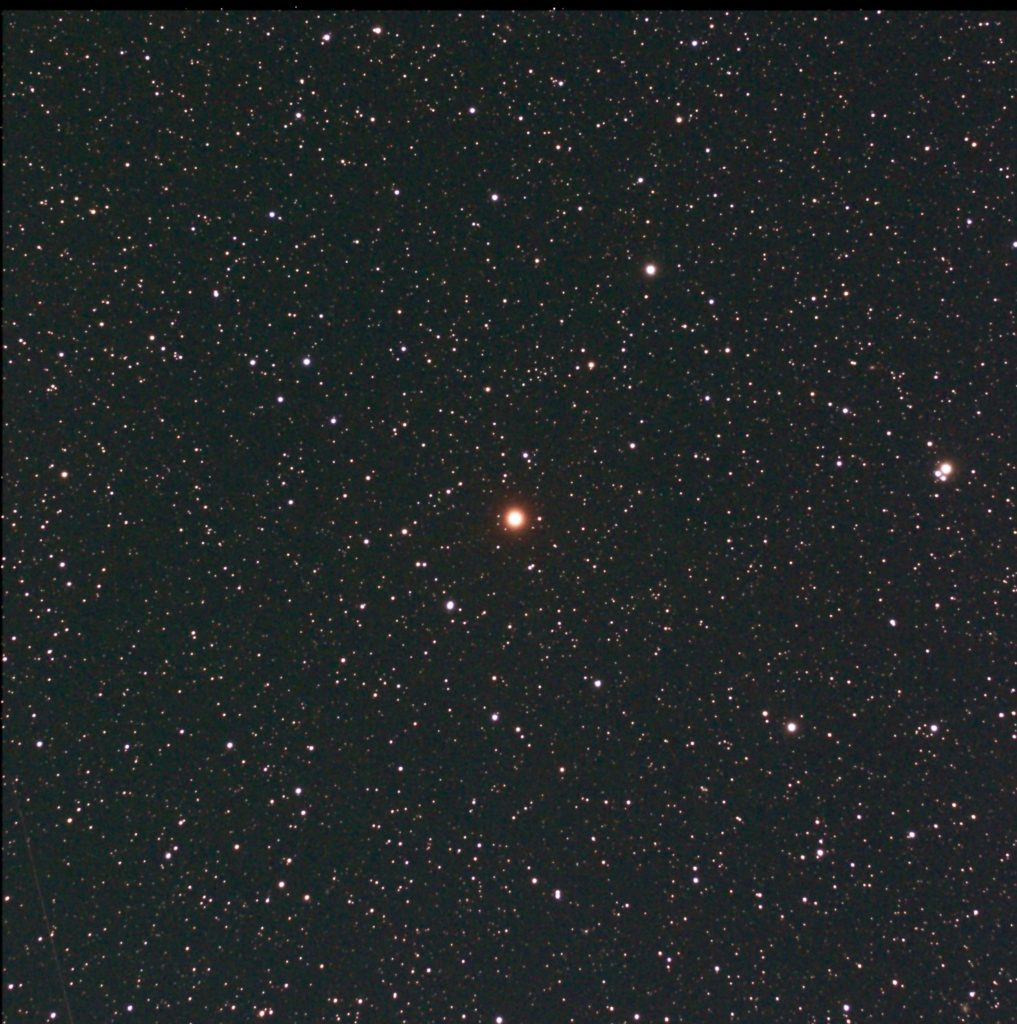
In this month’s sky tour, we grab our optics and tour of a few of the deep-sky highlights of the constellation Auriga, the Charioteer. Auriga lies along the relatively rich path of the northern Milky Way. And while it’s not Sagittarius, to be sure, the constellation has an eclectic selection of open clusters, nebulae, and interesting stars. Southern-hemisphere stargazers can also spot the constellation over the northern horizon in December through February.
A Trio of Open Star Clusters
Let’s begin the tour with the three brightest open clusters in the constellation, all of which lie consecutively on Messier’s list as M36, M37, and M38. They all lie at about the same distance, 4,200 light years , but they are otherwise quite different from each other. All lie within a single field of view of a pair of 7×50 binoculars.
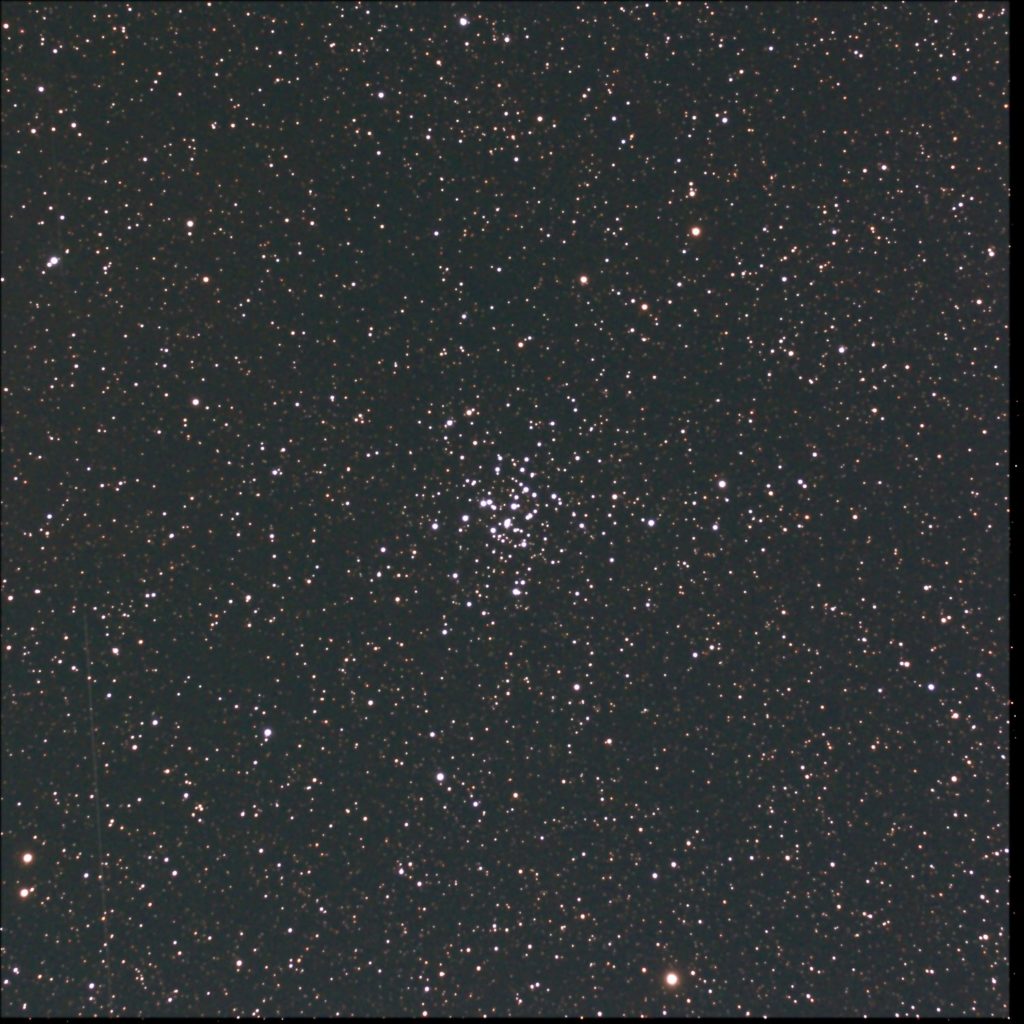
M36 is the smallest and youngest of the trio, and, with optics, it presents a lovely arrangement of blue-white stars. The cluster lies within the hexagon of Auriga just northwest of the mid-point of the line between Alnath and θ (theta) Aurigae. The cluster comprises a loose group of about 50 stars. Moderate magnification in a telescope opens the cluster up nicely for inspection. The edges of the cluster are not well defined, and streams of blue stars appear to arc out from the center like the arms of a distorted cross.
Just two degrees northwest of M36 lies the open cluster M38. It forms an equilateral triangle with Elnath and ι (iota) Aurigae. The cluster is about 0.3o across, some 1/3 larger than M36, but it’s also half a magnitude fainter. There appear to be twice as many stars in this cluster as M36– about 120 stars– and the cluster is much older than M36, so there are fewer blue-white stars here. At 75x, you’ll see about 60-80 stars of magnitude 8 and fainter. Like M36, the boundary of the cluster is ill defined. There’s an odd-looking void near the center of the cluster. If you can manage 70-80x with a one degree field of view, you can also see the smaller and fainter cluster NGC 1907 just south of M38.
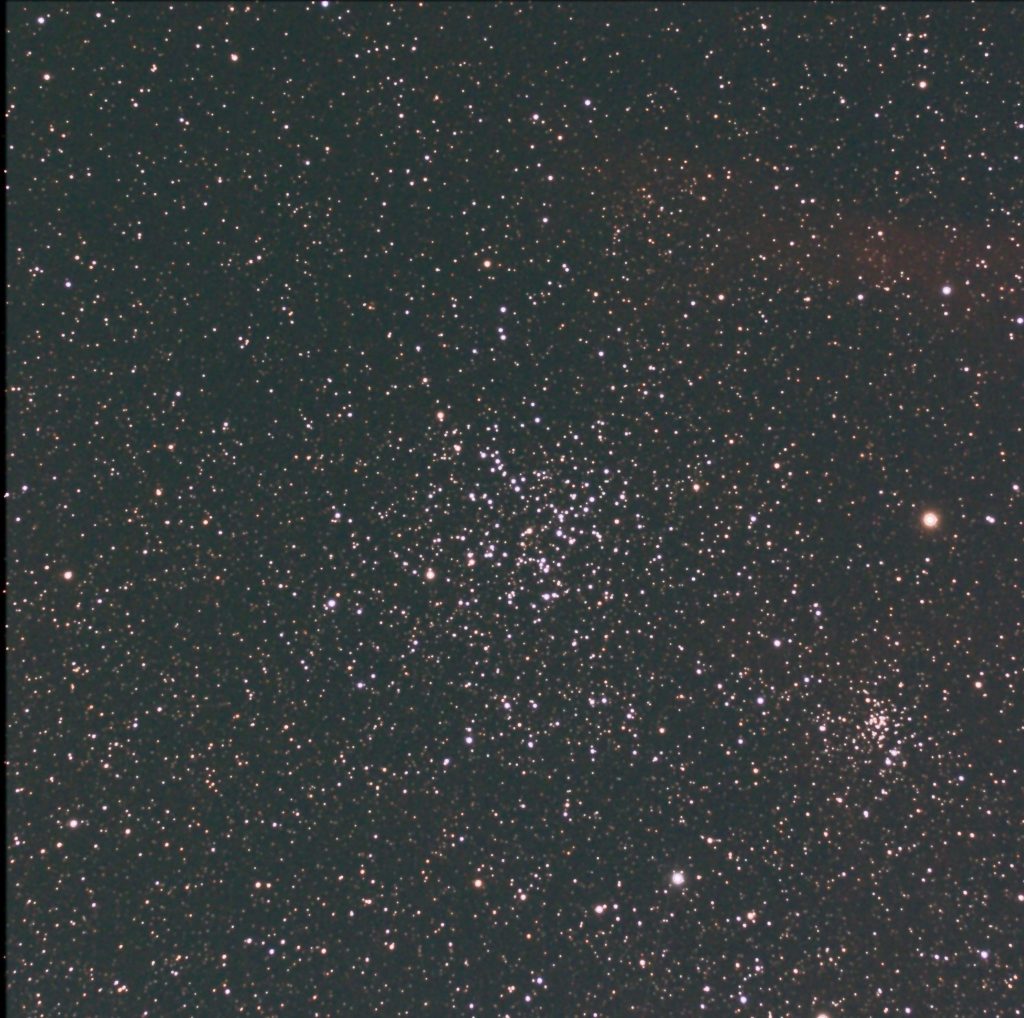
The open star cluster M37 is the brightest of the three Auriga Messier objects and by far the most striking. It lies just outside the hexagon of Auriga, about as far outside the hexagon as M36 lies within it. The cluster presents a rich spray of faint stars clumped around a glorious central 9th-magnitude red-orange star. M37 makes the “best-of” list of many experienced stargazers. For dramatic effect, when you tour this part of the sky, look first at M36, then M38, and end with the magnificent M37.

Carbon Star UU Aurigae
Now for something different – the carbon star UU Aurigae. Located about ten degrees east of the star β Aurigae (Menkalinan), at peak brightness UU Aur shines at 5th magnitude with striking red glow. It’s also a variable star which drops down to 7th magnitude irregularly every 400 days or so.
Like all carbon stars, UU Aur is a mid-sized star that’s getting long in the tooth, having run out of hydrogen fuel to burn in its core. It still holds itself up against the inward pull of gravity by burning hydrogen and helium in a thin shell around the dense core, ballooning the star into a red giant. Convection has dredged up carbon from the star’s interior into the cool outer layers where it combines with other elements to form small carbon molecules like C2, CH, and even SiC2. This material scatters blue light from inside the star and passes red light unscathed resulting in an enhancement of the star’s already reddish color. Even a pair of binoculars shows the result of this spectral cloak of carbon molecules around the star, but its deep-red campfire color is especially striking in a telescope (see the image of UU Aurigae at top).
Stars like UU Aurigae contribute to the ecology of the Milky Way by ejecting the fine carbon-compound dust into the interstellar medium where it congregates in dark nebulae that block light from background stars along the plane of the Milky Way. Many of these nebulae, which also co-mingle with vast clouds of hydrogen and helium gas, collapse to form clusters of new stars, but the dust formed in carbon stars can remain in the cooler reaches of these new solar systems to collect in the outer layers of comets and asteroids, which themselves might seed the building blocks of life on new planets.
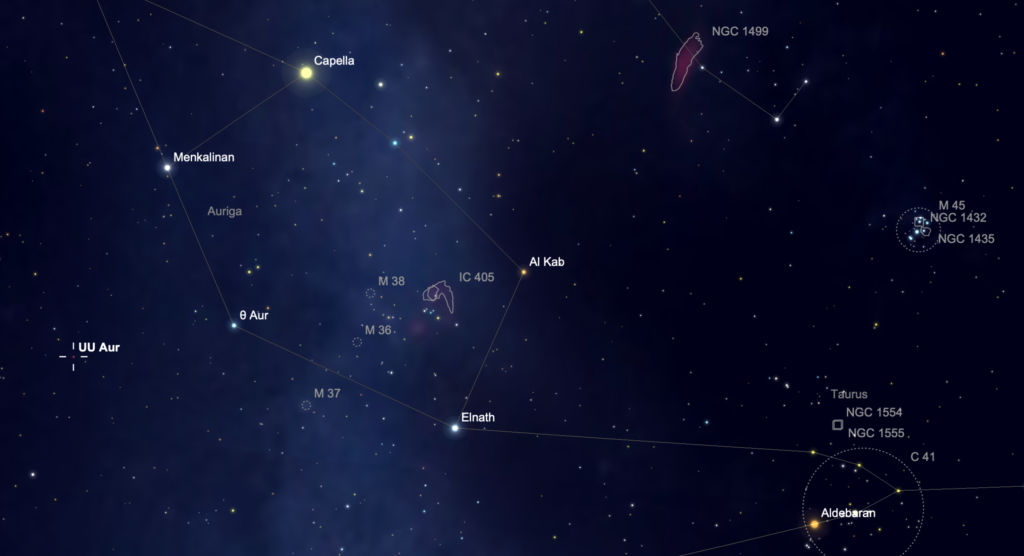
The Flaming Star Nebula
Finally on this tour, I encourage you to look for the nebula IC 405, the Flaming Star Nebula, a favorite of astrophotographers but an object that’s still visible in dark sky in a 4″ or larger scope. With the help of a nebula filter, it’s visible as a frosty patch about 15′ wide just east of the 6th-magntiude star AE Aurigae which itself just on the edge of the nebulosity.
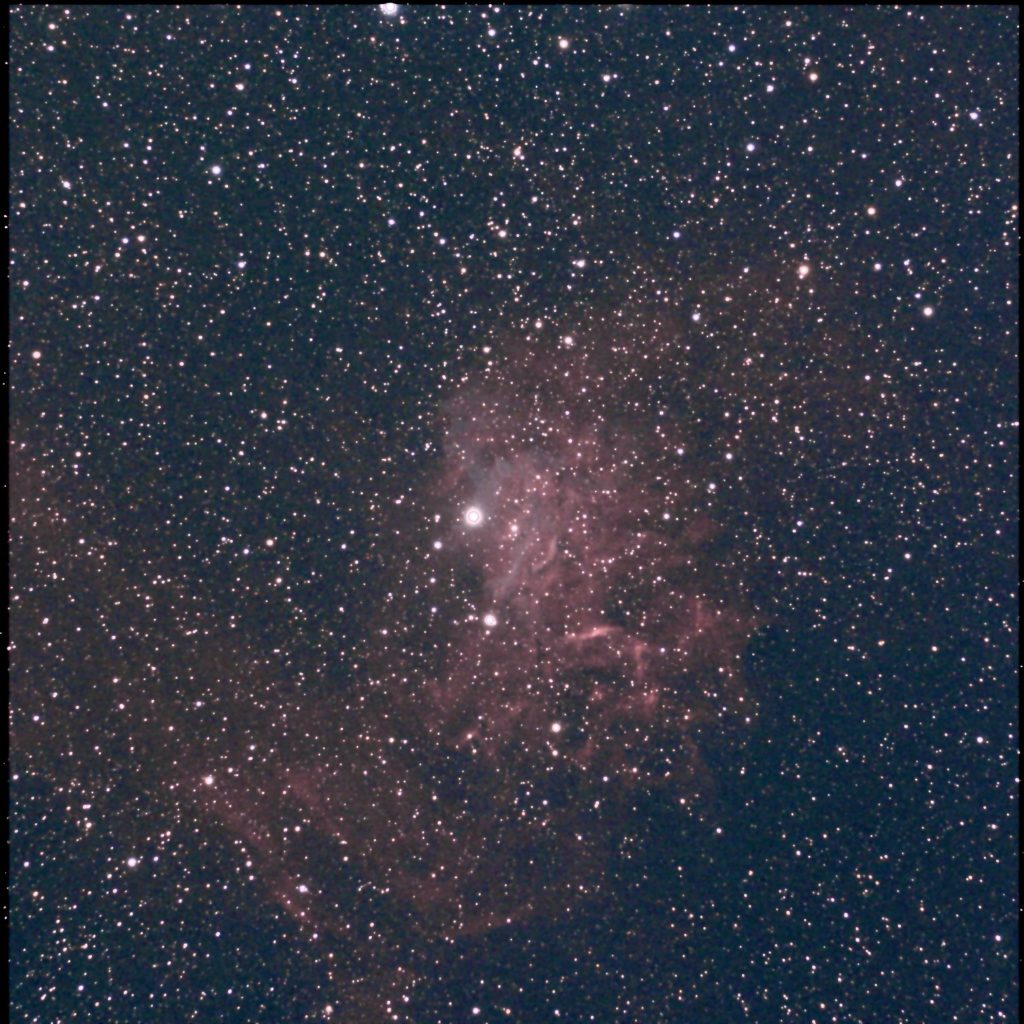
Keen-eyed stargazers can spot the nebula in perfect sky with a pair of 10×50 binoculars; I can just barely see it in a 4″ scope in good conditions.
It’s worth the effort to see this extraordinary object: unlike other nebulae that glow from the light of stars that form within, IC 405 is an accidental nebula set alight by the star AE Aurigae as it passes by chance through a relatively dense cloud of hydrogen gas. The star did not form here – it was born in the vicinity of the Orion Nebula from which it was ejected a few million years ago by a supernova. This immensely bright “runaway” star continues to speed across the Milky Way, soon to exit its enveloping gas cloud and leaving the nebula to fade away.
Share This: